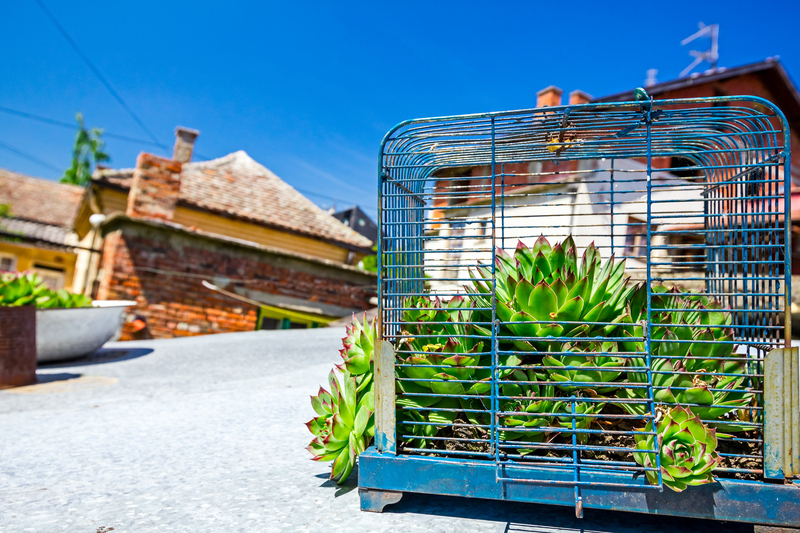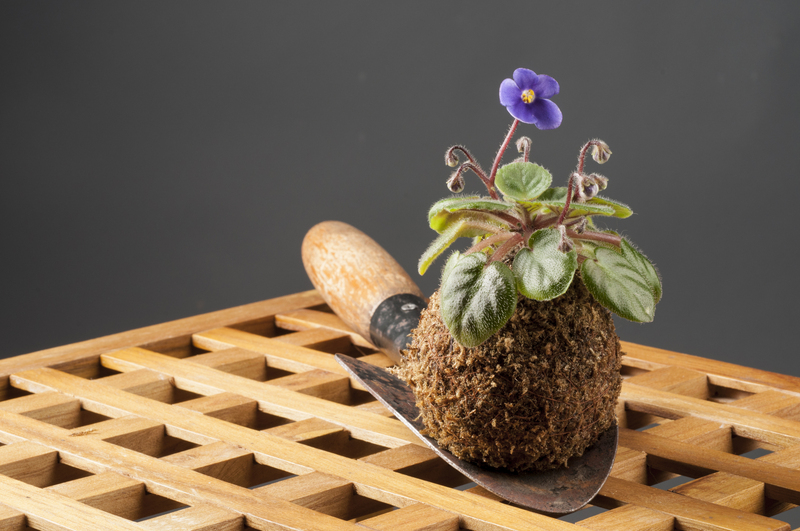Take Control of Weeds with This 3-Tip Guide
Posted on 21/08/2025
Take Control of Weeds with This 3-Tip Guide
Weeds can quickly overrun your garden, spoil your lawn's healthy appearance, and steal nutrients from your favorite flowers, vegetables, and grass. Whether you're an avid gardener or a weekend yard warrior, taking charge of weeds is crucial for maintaining a lush, thriving landscape. In this comprehensive article, you'll discover a 3-tip guide to help you effectively control weeds and keep your garden looking its best throughout the season.
Why Is Weed Control So Important?
Weeds are not just an eyesore. Unchecked, they aggressively compete for water, nutrients, sunlight, and space, often outpacing and overtaking your desired plants. Proper weed management is therefore essential for a healthy garden or lawn.
- Nutrient Competition: Weeds steal vital nutrients from your soil, which should be nourishing your plants.
- Pest and Disease Hosts: Weeds often harbor pests and diseases that can easily infect your garden crops.
- Aesthetic Impact: An overgrown patch of weeds can badly diminish your landscape's visual appeal.
- Yield Reduction: For vegetable patches or cropland, heavy weed populations can drastically cut crop yield.
That's why learning how to control weeds efficiently is a must for every gardener and homeowner. Let's dive into three proven, practical ways to turn the tide in your battle against these persistent intruders.

3 Essential Tips to Take Control of Weeds
Tip 1: Prevent Weeds Before They Spread
The most effective weed management begins with weed prevention. Stopping weeds before they even take root saves you a lot of hard labor later. Here are some strategies to help you outsmart and outrun weeds right at the start:
- Mulching: Mulch acts as a physical barrier that blocks sunlight from reaching weed seeds, hindering their germination. Organic mulches such as wood chips, straw, shredded leaves, or compost not only suppress weeds but also enrich the soil as they decompose. Apply a 2-3 inch layer around your plants and in garden beds for the best results.
- Healthy Lawn Practices: A thick, healthy lawn can crowd out and shade weed seeds. Mow your lawn at the proper height, overseed thin spots, and fertilize as needed to keep your grass growing strong so it can compete with weeds.
- Landscape Fabric and Barriers: In flowerbeds or vegetable plots, landscape fabric or black plastic mulch provides another layer of security that physically prevents weed growth. Always top with a decorative mulch or gravel to hide the fabric and further suppress weeds.
- Clean Tools and Equipment: Don't forget to clean your gardening tools after each use. Soil attached to shovels, hoes, or boots can transport weed seeds from one area of your yard to another.
By prioritizing these proactive weed control methods, you'll drastically reduce the amount of time spent dealing with mature, stubborn weeds.
Tip 2: Remove Existing Weeds Properly and Regularly
Once weeds appear, immediate removal is critical to prevent them from spreading seeds and multiplying. Correct technique is key:
- Hand Pulling: This is the best way to eliminate weeds without disturbing cultivated plants. Move slowly and grasp weeds near the base, firmly pulling out the entire root system (especially taproot species like dandelions). It's easier after rainfall or watering, when soil is moist.
- Weeding Tools: For tougher or deep-rooted weeds, use tools such as hoes, weeders, or dandelion diggers. Precision tools help you get the roots and minimize disturbance to the surrounding soil.
- Timing Matters: The optimal time to remove weeds is before they flower and set seed. Some weeds can produce thousands of seeds per plant--removing them pre-flowering prevents future outbreaks.
- Consistent Schedule: Make weeding a regular part of your garden routine. A weekly walk-through makes it easy to spot and remove young weeds before they become unmanageable.
- Dispose Wisely: Do not compost seed-bearing weeds--instead, bag and dispose of them to prevent re-infestation.
Taking control of weeds is about vigilance and consistent effort. The more often you clear out weeds, the less laborious it becomes over time.
Tip 3: Use Sustainable and Effective Weed Control Products
When prevention and manual removal aren't enough, or when confronting large, persistent infestations, the careful use of weed control products can make a big difference. But it's essential to choose the right products and use them responsibly for both garden health and the environment:
- Organic Herbicides: Eco-friendly options include formulations containing vinegar, corn gluten meal, lemon oil, fatty acids, or natural salt-based products. They are best suited for spot-treating small weeds or cracks in driveways and patios. Always follow package instructions closely.
- Selective Herbicides: For lawns, select products formulated to kill broadleaf lawn weeds (like clover or dandelion) without harming your turfgrass. Apply them in cool, calm weather to avoid drift to desirable plants.
- Pre-Emergent Herbicides: These products stop weed seeds from germinating and are especially useful in large lawns or flowerbeds. Apply before weeds (and your chosen plants) start growing.
- Glyphosate-Based and Systemic Herbicides: For extreme cases (such as overgrown areas or invasive perennial weeds), carefully targeted application can provide effective results. Shield off flowers or vegetables from contact and use only as a last resort.
- Non-Chemical Alternatives: Boiling water, natural flame weeders, and hand-held steamers can be surprisingly effective at killing weeds in garden paths or patio cracks without chemicals.
Important: Always read and follow the label directions for any product, wear protective equipment, and store chemicals safely away from children and pets. Opt for spot treatments rather than blanket applications to reduce environmental impact.
Bonus: Top Weeding Mistakes to Avoid
- Ignoring the Root System: Leaving roots in the ground means weeds are likely to regrow quickly.
- Weeding When Soil is Too Dry: Weeds snap off above ground instead of coming out with roots. Always weed when soil is moist.
- Letting Weeds Seed: Allowing even a few weeds to flower can set the stage for a mass invasion next season.
- Using Products Incorrectly: Overuse or improper timing can harm beneficial plants, wildlife, and soil health.
How to Keep Weeds Away: Long-Term Strategies for Weed Control
- Dense Planting: Plant desired crops or flowers more closely together so weeds have less room to emerge.
-
Crop Rotation: For vegetable gardens, rotating crops every year helps disrupt weed cycles.
Change what you plant and where you plant it each season. - Cover Crops: Use cover crops like clover or rye grass in off-seasons to smother weeds and boost soil fertility.
- Proper Watering: Use drip irrigation or soaker hoses to focus water on your plants (not weeds), making it more difficult for weed seeds to flourish.
- Edge Maintenance: Keep borders between lawns, beds, and paths well defined to prevent the encroachment of weed seeds.

Frequently Asked Questions About Weed Control
- What causes weeds to become a problem?
Weeds thrive where soil is bare, moist, and exposed to sunlight. Poor lawn maintenance, overworking soil, and using contaminated compost can all contribute to weed outbreaks. - Is it okay to use chemical weed killers?
When used responsibly, chemical weed killers can play a role in large-scale or difficult infestations. However, focus on sustainable, targeted methods to minimize risks to beneficial plants, animals, and soil health. - How often should I weed my garden?
For best results, inspect and weed your garden at least once a week to keep small problems from becoming overwhelming. - Are there any weeds with garden benefits?
Some weeds, such as clover, can add nitrogen to the soil or attract pollinators. However, left unchecked, even "beneficial" weeds may outcompete your garden plants. - What is the best time of year for weed control?
Spring and early summer are critical, as most weed seeds germinate then. However, autumn is also ideal for tackling perennial root systems.
Conclusion: Take Charge and Enjoy a Weed-Free Landscape
Effective weed management isn't just about reacting when weeds appear--it's about commitment to a consistent, multi-layered approach. By implementing this 3-tip weed control guide, you can prevent weeds before they start, tackle weeds that do appear with confidence, and use the best sustainable solutions at your disposal.
- Prevent weeds from taking hold with mulching, dense planting, and healthy lawn care.
- Remove existing weeds quickly, ensuring roots are pulled and seeds are kept out of the compost.
- Use appropriate products and alternatives for problem areas--judiciously and safely.
With just a little bit of planning, persistence, and know-how, you'll take control of weeds and reclaim your landscape, enjoying a healthier, more beautiful garden all season long. Start today--your plants will thank you!

